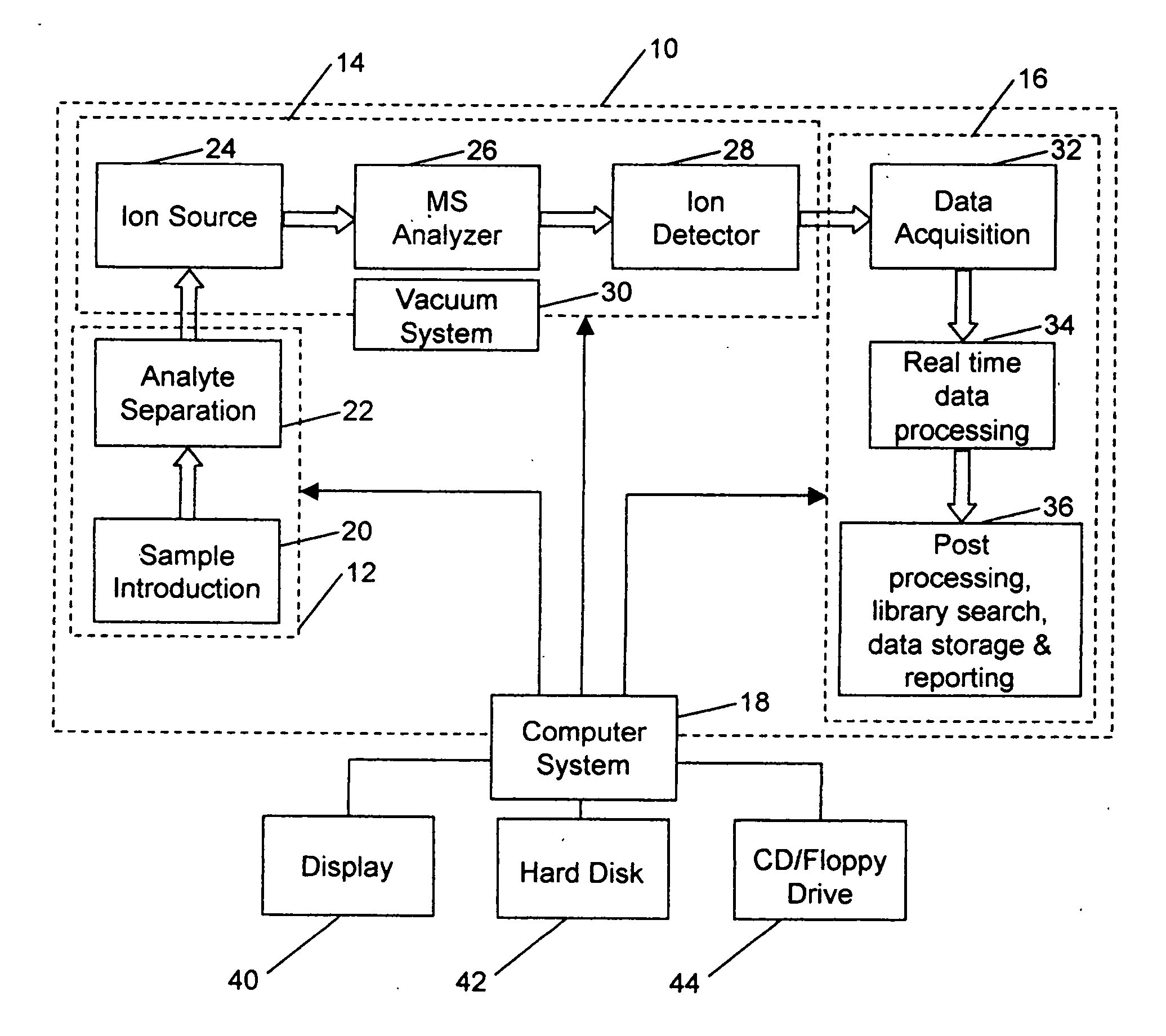Chromatographic and mass spectral date analysis
a mass spectral date and chromatographic technology, applied in the direction of dispersed particle separation, instruments, separation processes, etc., can solve the problems of complex quantitative process, many steps, and inability to widely use automation packages, and achieve the effect of rapid drug metabolite identification
- Summary
- Abstract
- Description
- Claims
- Application Information
AI Technical Summary
Benefits of technology
Problems solved by technology
Method used
Image
Examples
Embodiment Construction
[0081] As pointed out in an earlier filing, U.S. Pat. No. 6,983,213, and International Patent Application PCT / US2004 / 034618 filed on Oct. 20, 2004, the chromatograms obtained in terms of detected signal as a function of time may be calibrated through the use of a calibration filter. The following description uses a chromatogram as an example, but the approach applies to other time-dependent signals such as plasmagrams produced by IMS. The steps needed in creating a calibration filter include:
[0082] 1. Obtain an actual chromatographic peak (FIG. 4A) in one of the following ways: [0083] A. In a separate chromatographic run under nominally the same conditions, for example, the same unknown at higher concentration levels in a calibration series to allow for good signal-to-noise measurement of the peak shape function. [0084] B. In the same chromatographic run with the use of a separate but parallel detector, such as a RAM (Radioactivity Monitor—usually used for radio-labeled compounds) ...
PUM
 Login to View More
Login to View More Abstract
Description
Claims
Application Information
 Login to View More
Login to View More - R&D
- Intellectual Property
- Life Sciences
- Materials
- Tech Scout
- Unparalleled Data Quality
- Higher Quality Content
- 60% Fewer Hallucinations
Browse by: Latest US Patents, China's latest patents, Technical Efficacy Thesaurus, Application Domain, Technology Topic, Popular Technical Reports.
© 2025 PatSnap. All rights reserved.Legal|Privacy policy|Modern Slavery Act Transparency Statement|Sitemap|About US| Contact US: help@patsnap.com



